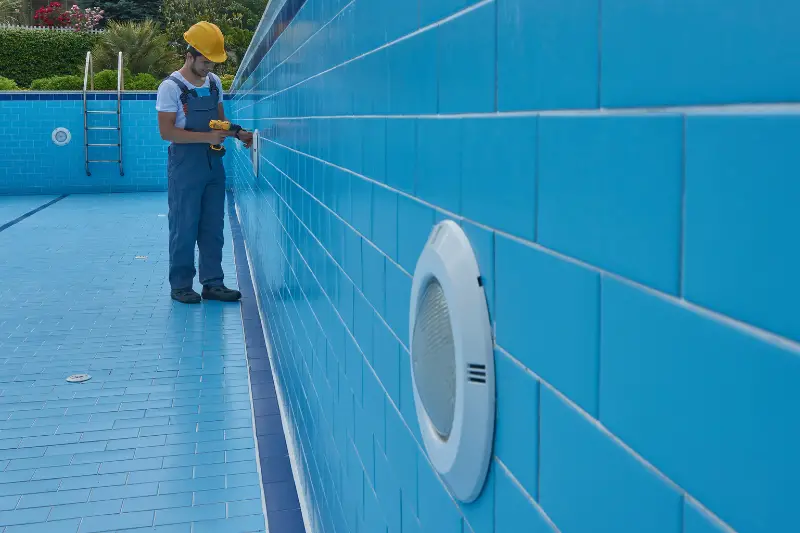Click here to get this post in PDF
Embarking on a pool renovation project can be a thrilling prospect. Replacing aged or damaged pool tiles not only boosts the aesthetic appeal of your swimming pool but also adds to the property’s value. Whether you’re a DIY enthusiast or looking to understand the process before hiring the best pool renovations team in Sydney, this comprehensive guide will walk you through the twelve essential steps to replacing pool tiles effectively.
Step 1: Drain the Pool
Begin by draining your pool, adhering strictly to local regulations regarding water disposal. Ensure the pool is completely empty and secure the area to prevent any accidental falls or injuries.
Step 2: Remove Old Tiles
With the pool drained, it’s time to remove the old tiles. Wear protective gear, such as gloves and safety goggles, and gently chisel away the tiles using a hammer and chisel. Be patient and meticulous to avoid damaging the underlying surface.
Step 3: Prepare the Surface
Once the tiles are removed, thoroughly clean the surface. This involves scraping off old adhesive and smoothing out any rough spots. A clean, debris-free surface is essential for the new tiles to adhere properly.
Step 4: Assess the Surface
Inspect the substrate for any damage. Cracks or uneven areas must be repaired before proceeding to ensure a flat and stable base for the new tiles.
Step 5: Choose Your Tiles
Selecting the right tiles is crucial. Consider the color, shape, and size that best complement your pool design. Lay out your tiles in advance to confirm the pattern and calculate the quantity needed.
Step 6: Apply Tile Adhesive
Apply a high-quality waterproof tile adhesive to the pool’s surface using a notched trowel. Work in small sections to prevent the adhesive from drying before the tiles are placed.
Step 7: Set the Tiles
Carefully set each tile onto the adhesive, pressing firmly to secure it in place. Use tile spacers to maintain even grout lines and ensure a professional-looking finish.
Step 8: Cutting Tiles
Custom cuts will be necessary for a perfect fit around corners and curves. A tile cutter or wet saw is indispensable for making precise cuts without damaging the tiles.
Step 9: Let the Adhesive Cure
After all the tiles are in position, allow the adhesive to cure completely. The duration will vary based on the product used, but it’s typically between 24 to 48 hours.
Step 10: Grouting
Once the adhesive has set, apply grout between the tiles using a rubber float. Work the grout into the joints and scrape off the excess. Grouting not only secures the tiles further but also provides a waterproof seal.
Step 11: Cleaning Up
After the grout has set for a bit, which may take a few hours, wipe down the tiles with a damp sponge to remove any grout haze. Be gentle to avoid disturbing the freshly applied grout.
Step 12: Filling the Pool
When the grout has fully cured, which can take up to 48 hours, start refilling your pool. Do this gradually and monitor the tiles to ensure they remain in place as the water level rises.
By following these steps, you can ensure a successful tile replacement for your pool. However, for those who prefer to leave it to the professionals, especially for the best pool renovations Sydney, it’s important to select a reputable company. Look for teams with a robust portfolio of completed projects and positive client testimonials.
In conclusion, replacing pool tiles is a detailed process that requires patience, precision, and the right materials. Whether you decide to take on this project yourself or hire experts, the result should be a beautifully renovated pool that’s ready for enjoyment for years to come.
You may also like: Cleaning pool tiles: A step by step guide
Image source: stock.adobe.com

